Python爬虫 Beautiful Soup库详解#4
爬虫专栏:http://t.csdnimg.cn/WfCSx
使用 Beautiful Soup
前面介绍了正则表达式的相关用法,但是一旦正则表达式写的有问题,得到的可能就不是我们想要的结果了。而且对于一个网页来说,都有一定的特殊结构和层级关系,而且很多节点都有 id 或 class 来作区分,所以借助它们的结构和属性来提取不也可以吗?
这一节中,我们就来介绍一个强大的解析工具 Beautiful Soup,它借助网页的结构和属性等特性来解析网页。有了它,我们不用再去写一些复杂的正则表达式,只需要简单的几条语句,就可以完成网页中某个元素的提取。
废话不多说,接下来就来感受一下 Beautiful Soup 的强大之处吧。
1. Beautiful Soup 简介
简单来说,BeautifulSoup 就是 Python 的一个 HTML 或 XML 的解析库,我们可以用它来方便地从网页中提取数据,官方的解释如下:
BeautifulSoup 提供一些简单的、Python 式的函数用来处理导航、搜索、修改分析树等功能。它是一个工具箱,通过解析文档为用户提供需要抓取的数据,因为简单,所以不需要多少代码就可以写出一个完整的应用程序。 BeautifulSoup 自动将输入文档转换为 Unicode 编码,输出文档转换为 utf-8 编码。你不需要考虑编码方式,除非文档没有指定一个编码方式,这时你仅仅需要说明一下原始编码方式就可以了。 BeautifulSoup 已成为和 lxml、html5lib 一样出色的 Python 解释器,为用户灵活地提供不同的解析策略或强劲的速度。
所以说,利用它可以省去很多烦琐的提取工作,提高了解析效率。
2. 准备工作
在开始之前,请确保已经正确安装好了 Beautiful Soup 和 lxml,如果没有安装,可以参考第 1 章的内容。
3. 解析器
Beautiful Soup 在解析时实际上依赖解析器,它除了支持 Python 标准库中的 HTML 解析器外,还支持一些第三方解析器(比如 lxml)。列出了 Beautiful Soup 支持的解析器。
Beautiful Soup 支持的解析器
| 解析器 | 使用方法 | 优势 | 劣势 |
|---|---|---|---|
| Python 标准库 | BeautifulSoup(markup, "html.parser") | Python 的内置标准库、执行速度适中 、文档容错能力强 | Python 2.7.3 or 3.2.2) 前的版本中文容错能力差 |
| LXML HTML 解析器 | BeautifulSoup(markup, "lxml") | 速度快、文档容错能力强 | 需要安装 C 语言库 |
| LXML XML 解析器 | BeautifulSoup(markup, "xml") | 速度快、唯一支持 XML 的解析器 | 需要安装 C 语言库 |
| html5lib | BeautifulSoup(markup, "html5lib") | 最好的容错性、以浏览器的方式解析文档、生成 HTML5 格式的文档 | 速度慢、不依赖外部扩展 |
通过以上对比可以看出,lxml 解析器有解析 HTML 和 XML 的功能,而且速度快,容错能力强,所以推荐使用它。
如果使用 lxml,那么在初始化 Beautiful Soup 时,可以把第二个参数改为 lxml 即可:
from bs4 import BeautifulSoup
soup = BeautifulSoup('<p>Hello</p>', 'lxml')
print(soup.p.string)
在后面,Beautiful Soup 的用法实例也统一用这个解析器来演示。
4. 基本使用
下面首先用实例来看看 Beautiful Soup 的基本用法:
html = """ <html><head><title>The Dormouse's story</title></head> <body> <p class="title" name="dromouse"><b>The Dormouse's story</b></p> <p class="story">Once upon a time there were three little sisters; and their names were <a href="http://example.com/elsie" class="sister" id="link1"><!-- Elsie --></a>, <a href="http://example.com/lacie" class="sister" id="link2">Lacie</a> and <a href="http://example.com/tillie" class="sister" id="link3">Tillie</a>; and they lived at the bottom of a well.</p> <p class="story">...</p> """ from bs4 import BeautifulSoup soup = BeautifulSoup(html, 'lxml') print(soup.prettify()) print(soup.title.string)
运行结果:
<html><head><title>The Dormouse's story</title></head><body><p class="title" name="dromouse"><b>The Dormouse's story</b></p><p class="story">Once upon a time there were three little sisters; and their names were<a class="sister" href="http://example.com/elsie" id="link1"><!-- Elsie --></a>,<a class="sister" href="http://example.com/lacie" id="link2">Lacie</a>and<a class="sister" href="http://example.com/tillie" id="link3">Tillie</a>; and they lived at the bottom of a well.</p><p class="story">...</p></body> </html> The Dormouse's story
这里首先声明变量 html,它是一个 HTML 字符串。但是需要注意的是,它并不是一个完整的 HTML 字符串,因为 body 和 html 节点都没有闭合。接着,我们将它当作第一个参数传给 BeautifulSoup 对象,该对象的第二个参数为解析器的类型(这里使用 lxml),此时就完成了 BeaufulSoup 对象的初始化。然后,将这个对象赋值给 soup 变量。
接下来,就可以调用 soup 的各个方法和属性解析这串 HTML 代码了。
首先,调用 prettify() 方法。这个方法可以把要解析的字符串以标准的缩进格式输出。这里需要注意的是,输出结果里面包含 body 和 html 节点,也就是说对于不标准的 HTML 字符串 BeautifulSoup,可以自动更正格式。这一步不是由 prettify() 方法做的,而是在初始化 BeautifulSoup 时就完成了。
然后调用 soup.title.string,这实际上是输出 HTML 中 title 节点的文本内容。所以,soup.title 可以选出 HTML 中的 title 节点,再调用 string 属性就可以得到里面的文本了,所以我们可以通过简单调用几个属性完成文本提取,这是不是非常方便?
5. 节点选择器
直接调用节点的名称就可以选择节点元素,再调用 string 属性就可以得到节点内的文本了,这种选择方式速度非常快。如果单个节点结构层次非常清晰,可以选用这种方式来解析。
选择元素
下面再用一个例子详细说明选择元素的方法:
html = """ <html><head><title>The Dormouse's story</title></head> <body> <p class="title" name="dromouse"><b>The Dormouse's story</b></p> <p class="story">Once upon a time there were three little sisters; and their names were <a href="http://example.com/elsie" class="sister" id="link1"><!-- Elsie --></a>, <a href="http://example.com/lacie" class="sister" id="link2">Lacie</a> and <a href="http://example.com/tillie" class="sister" id="link3">Tillie</a>; and they lived at the bottom of a well.</p> <p class="story">...</p> """ from bs4 import BeautifulSoup soup = BeautifulSoup(html, 'lxml') print(soup.title) print(type(soup.title)) print(soup.title.string) print(soup.head) print(soup.p)
运行结果:
<title>The Dormouse's story</title> <class 'bs4.element.Tag'> The Dormouse's story <head><title>The Dormouse's story</title></head> <p class="title" name="dromouse"><b>The Dormouse's story</b></p>
这里依然选用刚才的 HTML 代码,首先打印输出 title 节点的选择结果,输出结果正是 title 节点加里面的文字内容。接下来,输出它的类型,是 bs4.element.Tag 类型,这是 Beautiful Soup 中一个重要的数据结构。经过选择器选择后,选择结果都是这种 Tag 类型。Tag 具有一些属性,比如 string 属性,调用该属性,可以得到节点的文本内容,所以接下来的输出结果正是节点的文本内容。
接下来,我们又尝试选择了 head 节点,结果也是节点加其内部的所有内容。最后,选择了 p 节点。不过这次情况比较特殊,我们发现结果是第一个 p 节点的内容,后面的几个 p 节点并没有选到。也就是说,当有多个节点时,这种选择方式只会选择到第一个匹配的节点,其他的后面节点都会忽略。
提取信息
上面演示了调用 string 属性来获取文本的值,那么如何获取节点属性的值呢?如何获取节点名呢?下面我们来统一梳理一下信息的提取方式。
获取名称
可以利用 name 属性获取节点的名称。这里还是以上面的文本为例,选取 title 节点,然后调用 name 属性就可以得到节点名称:
print(soup.title.name)
运行结果:
title
获取属性
每个节点可能有多个属性,比如 id 和 class 等,选择这个节点元素后,可以调用 attrs 获取所有属性:
print(soup.p.attrs) print(soup.p.attrs['name'])
运行结果:
{'class': ['title'], 'name': 'dromouse'}
dromouse
可以看到,attrs 的返回结果是字典形式,它把选择的节点的所有属性和属性值组合成一个字典。接下来,如果要获取 name 属性,就相当于从字典中获取某个键值,只需要用中括号加属性名就可以了。比如,要获取 name 属性,就可以通过 attrs['name'] 来得到。
其实这样有点烦琐,还有一种更简单的获取方式:可以不用写 attrs,直接在节点元素后面加中括号,传入属性名就可以获取属性值了。样例如下:
print(soup.p['name']) print(soup.p['class'])
运行结果如下:
dromouse ['title']
这里需要注意的是,有的返回结果是字符串,有的返回结果是字符串组成的列表。比如,name 属性的值是唯一的,返回的结果就是单个字符串。而对于 class,一个节点元素可能有多个 class,所以返回的是列表。在实际处理过程中,我们要注意判断类型。
获取内容
可以利用 string 属性获取节点元素包含的文本内容,比如要获取第一个 p 节点的文本:
print(soup.p.string)
运行结果如下:
The Dormouse's story
再次注意一下,这里选择到的 p 节点是第一个 p 节点,获取的文本也是第一个 p 节点里面的文本。
嵌套选择
在上面的例子中,我们知道每一个返回结果都是 bs4.element.Tag 类型,它同样可以继续调用节点进行下一步的选择。比如,我们获取了 head 节点元素,我们可以继续调用 head 来选取其内部的 head 节点元素:
html = """ <html><head><title>The Dormouse's story</title></head> <body> """ from bs4 import BeautifulSoup soup = BeautifulSoup(html, 'lxml') print(soup.head.title) print(type(soup.head.title)) print(soup.head.title.string)
运行结果如下:
<title>The Dormouse's story</title> <class 'bs4.element.Tag'> The Dormouse's story
第一行结果是调用 head 之后再次调用 title 而选择的 title 节点元素。然后打印输出了它的类型,可以看到,它仍然是 bs4.element.Tag 类型。也就是说,我们在 Tag 类型的基础上再次选择得到的依然还是 Tag 类型,每次返回的结果都相同,所以这样就可以做嵌套选择了。
最后,输出它的 string 属性,也就是节点里的文本内容。
关联选择
在做选择的时候,有时候不能做到一步就选到想要的节点元素,需要先选中某一个节点元素,然后以它为基准再选择它的子节点、父节点、兄弟节点等,这里就来介绍如何选择这些节点元素。
子节点和子孙节点
选取节点元素之后,如果想要获取它的直接子节点,可以调用 contents 属性,示例如下:
html = """ <html><head><title>The Dormouse's story</title></head><body><p class="story">Once upon a time there were three little sisters; and their names were<a href="http://example.com/elsie" class="sister" id="link1"><span>Elsie</span></a><a href="http://example.com/lacie" class="sister" id="link2">Lacie</a> and<a href="http://example.com/tillie" class="sister" id="link3">Tillie</a>and they lived at the bottom of a well.</p><p class="story">...</p> """ from bs4 import BeautifulSoup soup = BeautifulSoup(html, 'lxml') print(soup.p.contents)
运行结果如下:
['\n Once upon a time there were three little sisters; and their names were\n ', <a class="sister" href="http://example.com/elsie" id="link1"> <span>Elsie</span> </a>, '\n', <a class="sister" href="http://example.com/lacie" id="link2">Lacie</a>, ' \n and\n ', <a class="sister" href="http://example.com/tillie" id="link3">Tillie</a>, '\n and they lived at the bottom of a well.\n ']
可以看到,返回结果是列表形式。p 节点里既包含文本,又包含节点,最后会将它们以列表形式统一返回。
需要注意的是,列表中的每个元素都是 p 节点的直接子节点。比如第一个 a 节点里面包含一层 span 节点,这相当于孙子节点了,但是返回结果并没有单独把 span 节点选出来。所以说,contents 属性得到的结果是直接子节点的列表。
同样,我们可以调用 children 属性得到相应的结果:
from bs4 import BeautifulSoup soup = BeautifulSoup(html, 'lxml') print(soup.p.children) for i, child in enumerate(soup.p.children):print(i, child)
运行结果如下:
<list_iterator object at 0x1064f7dd8> 0 Once upon a time there were three little sisters; and their names were1 <a class="sister" href="http://example.com/elsie" id="link1"> <span>Elsie</span> </a> 2 3 <a class="sister" href="http://example.com/lacie" id="link2">Lacie</a> 4 and5 <a class="sister" href="http://example.com/tillie" id="link3">Tillie</a> 6 and they lived at the bottom of a well.
还是同样的 HTML 文本,这里调用了 children 属性来选择,返回结果是生成器类型。接下来,我们用 for 循环输出相应的内容。
如果要得到所有的子孙节点的话,可以调用 descendants 属性:
from bs4 import BeautifulSoup soup = BeautifulSoup(html, 'lxml') print(soup.p.descendants) for i, child in enumerate(soup.p.descendants):print(i, child)
运行结果如下:
<generator object descendants at 0x10650e678> 0 Once upon a time there were three little sisters; and their names were1 <a class="sister" href="http://example.com/elsie" id="link1"> <span>Elsie</span> </a> 2 3 <span>Elsie</span> 4 Elsie 5 6 7 <a class="sister" href="http://example.com/lacie" id="link2">Lacie</a> 8 Lacie 9 and10 <a class="sister" href="http://example.com/tillie" id="link3">Tillie</a> 11 Tillie 12 and they lived at the bottom of a well.
此时返回结果还是生成器。遍历输出一下可以看到,这次的输出结果就包含了 span 节点。descendants 会递归查询所有子节点,得到所有的子孙节点。
父节点和祖先节点
如果要获取某个节点元素的父节点,可以调用 parent 属性:
html = """ <html><head><title>The Dormouse's story</title></head><body><p class="story">Once upon a time there were three little sisters; and their names were<a href="http://example.com/elsie" class="sister" id="link1"><span>Elsie</span></a></p><p class="story">...</p> """ from bs4 import BeautifulSoup soup = BeautifulSoup(html, 'lxml') print(soup.a.parent)
运行结果如下:
<p class="story">Once upon a time there were three little sisters; and their names were<a class="sister" href="http://example.com/elsie" id="link1"> <span>Elsie</span> </a> </p>
这里我们选择的是第一个 a 节点的父节点元素。很明显,它的父节点是 p 节点,输出结果便是 p 节点及其内部的内容。
需要注意的是,这里输出的仅仅是 a 节点的直接父节点,而没有再向外寻找父节点的祖先节点。如果想获取所有的祖先节点,可以调用 parents 属性:
html = """ <html><body><p class="story"><a href="http://example.com/elsie" class="sister" id="link1"><span>Elsie</span></a></p> """ from bs4 import BeautifulSoup soup = BeautifulSoup(html, 'lxml') print(type(soup.a.parents)) print(list(enumerate(soup.a.parents)))
运行结果如下:
<class 'generator'> [(0, <p class="story"> <a class="sister" href="http://example.com/elsie" id="link1"> <span>Elsie</span> </a> </p>), (1, <body> <p class="story"> <a class="sister" href="http://example.com/elsie" id="link1"> <span>Elsie</span> </a> </p> </body>), (2, <html> <body> <p class="story"> <a class="sister" href="http://example.com/elsie" id="link1"> <span>Elsie</span> </a> </p> </body></html>), (3, <html> <body> <p class="story"> <a class="sister" href="http://example.com/elsie" id="link1"> <span>Elsie</span> </a> </p> </body></html>)]
可以发现,返回结果是生成器类型。这里用列表输出了它的索引和内容,而列表中的元素就是 a 节点的祖先节点。
兄弟节点
上面说明了子节点和父节点的获取方式,如果要获取同级的节点(也就是兄弟节点),应该怎么办呢?示例如下:
html = """
<html><body><p class="story">Once upon a time there were three little sisters; and their names were<a href="http://example.com/elsie" class="sister" id="link1"><span>Elsie</span></a>Hello<a href="http://example.com/lacie" class="sister" id="link2">Lacie</a> and<a href="http://example.com/tillie" class="sister" id="link3">Tillie</a>and they lived at the bottom of a well.</p>
"""
from bs4 import BeautifulSoup
soup = BeautifulSoup(html, 'lxml')
print('Next Sibling', soup.a.next_sibling)
print('Prev Sibling', soup.a.previous_sibling)
print('Next Siblings', list(enumerate(soup.a.next_siblings)))
print('Prev Siblings', list(enumerate(soup.a.previous_siblings)))
运行结果如下:
Next Sibling HelloPrev Sibling Once upon a time there were three little sisters; and their names wereNext Siblings [(0, '\n Hello\n '), (1, <a class="sister" href="http://example.com/lacie" id="link2">Lacie</a>), (2, ' \n and\n '), (3, <a class="sister" href="http://example.com/tillie" id="link3">Tillie</a>), (4, '\n and they lived at the bottom of a well.\n ')] Prev Siblings [(0, '\n Once upon a time there were three little sisters; and their names were\n ')]
可以看到,这里调用了 4 个属性,其中 next_sibling 和 previous_sibling 分别获取节点的下一个和上一个兄弟元素,next_siblings 和 previous_siblings 则分别返回后面和前面的兄弟节点。
提取信息
前面讲解了关联元素节点的选择方法,如果想要获取它们的一些信息,比如文本、属性等,也用同样的方法,示例如下:
html = """
<html><body><p class="story">Once upon a time there were three little sisters; and their names were<a href="http://example.com/elsie" class="sister" id="link1">Bob</a><a href="http://example.com/lacie" class="sister" id="link2">Lacie</a> </p>
"""
from bs4 import BeautifulSoup
soup = BeautifulSoup(html, 'lxml')
print('Next Sibling:')
print(type(soup.a.next_sibling))
print(soup.a.next_sibling)
print(soup.a.next_sibling.string)
print('Parent:')
print(type(soup.a.parents))
print(list(soup.a.parents)[0])
print(list(soup.a.parents)[0].attrs['class'])
运行结果:
Next Sibling: <class 'bs4.element.Tag'> <a class="sister" href="http://example.com/lacie" id="link2">Lacie</a> Lacie Parent: <class 'generator'> <p class="story">Once upon a time there were three little sisters; and their names were<a class="sister" href="http://example.com/elsie" id="link1">Bob</a><a class="sister" href="http://example.com/lacie" id="link2">Lacie</a> </p> ['story']
如果返回结果是单个节点,那么可以直接调用 string、attrs 等属性获得其文本和属性;如果返回结果是多个节点的生成器,则可以转为列表后取出某个元素,然后再调用 string、attrs 等属性获取其对应节点的文本和属性。
6. 方法选择器
前面所讲的选择方法都是通过属性来选择的,这种方法非常快,但是如果进行比较复杂的选择的话,它就比较烦琐,不够灵活了。幸好,Beautiful Soup 还为我们提供了一些查询方法,比如 find_all 和 find 等,调用它们,然后传入相应的参数,就可以灵活查询了。
find_all
find_all,顾名思义,就是查询所有符合条件的元素,可以给它传入一些属性或文本来得到符合条件的元素,功能十分强大。
它的 API 如下:
find_all(name , attrs , recursive , text , **kwargs)
name
我们可以根据节点名来查询元素,下面我们用一个实例来感受一下:
html=''' <div class="panel"><div class="panel-heading"><h4>Hello</h4></div><div class="panel-body"><ul class="list" id="list-1"><li class="element">Foo</li><li class="element">Bar</li><li class="element">Jay</li></ul><ul class="list list-small" id="list-2"><li class="element">Foo</li><li class="element">Bar</li></ul></div> </div> ''' from bs4 import BeautifulSoup soup = BeautifulSoup(html, 'lxml') print(soup.find_all(name='ul')) print(type(soup.find_all(name='ul')[0]))
运行结果:
[<ul class="list" id="list-1"> <li class="element">Foo</li> <li class="element">Bar</li> <li class="element">Jay</li> </ul>, <ul class="list list-small" id="list-2"> <li class="element">Foo</li> <li class="element">Bar</li> </ul>] <class 'bs4.element.Tag'>
这里我们调用了 find_all 方法,传入 name 参数,其参数值为 ul。也就是说,我们想要查询所有 ul 节点,返回结果是列表类型,长度为 2,每个元素依然都是 bs4.element.Tag 类型。
因为都是 Tag 类型,所以依然可以进行嵌套查询。还是同样的文本,这里查询出所有 ul 节点后,再继续查询其内部的 li 节点:
for ul in soup.find_all(name='ul'):print(ul.find_all(name='li'))
运行结果如下:
[<li class="element">Foo</li>, <li class="element">Bar</li>, <li class="element">Jay</li>] [<li class="element">Foo</li>, <li class="element">Bar</li>]
返回结果是列表类型,列表中的每个元素依然还是 Tag 类型。
接下来我们就可以遍历每个 li 获取它的文本了。
for ul in soup.find_all(name='ul'):print(ul.find_all(name='li'))for li in ul.find_all(name='li'):print(li.string)
运行结果如下:
[<li class="element">Foo</li>, <li class="element">Bar</li>, <li class="element">Jay</li>] Foo Bar Jay [<li class="element">Foo</li>, <li class="element">Bar</li>] Foo Bar
attrs
除了根据节点名查询,我们也可以传入一些属性来进行查询,我们用一个实例感受一下:
html='''
<div class="panel"><div class="panel-heading"><h4>Hello</h4></div><div class="panel-body"><ul class="list" id="list-1" name="elements"><li class="element">Foo</li><li class="element">Bar</li><li class="element">Jay</li></ul><ul class="list list-small" id="list-2"><li class="element">Foo</li><li class="element">Bar</li></ul></div>
</div>
'''
from bs4 import BeautifulSoup
soup = BeautifulSoup(html, 'lxml')
print(soup.find_all(attrs={'id': 'list-1'}))
print(soup.find_all(attrs={'name': 'elements'}))
运行结果:
[<ul class="list" id="list-1" name="elements"> <li class="element">Foo</li> <li class="element">Bar</li> <li class="element">Jay</li> </ul>] [<ul class="list" id="list-1" name="elements"> <li class="element">Foo</li> <li class="element">Bar</li> <li class="element">Jay</li> </ul>]
这里查询的时候传入的是 attrs 参数,参数的类型是字典类型。比如,要查询 id 为 list-1 的节点,可以传入 attrs={'id': 'list-1'} 的查询条件,得到的结果是列表形式,包含的内容就是符合 id 为 list-1 的所有节点。在上面的例子中,符合条件的元素个数是 1,所以结果是长度为 1 的列表。
对于一些常用的属性,比如 id 和 class 等,我们可以不用 attrs 来传递。比如,要查询 id 为 list-1 的节点,可以直接传入 id 这个参数。还是上面的文本,我们换一种方式来查询:
from bs4 import BeautifulSoup soup = BeautifulSoup(html, 'lxml') print(soup.find_all(id='list-1')) print(soup.find_all(class_='element'))
运行结果如下:
[<ul class="list" id="list-1"> <li class="element">Foo</li> <li class="element">Bar</li> <li class="element">Jay</li> </ul>] [<li class="element">Foo</li>, <li class="element">Bar</li>, <li class="element">Jay</li>, <li class="element">Foo</li>, <li class="element">Bar</li>]
这里直接传入 id='list-1',就可以查询 id 为 list-1 的节点元素了。而对于 class 来说,由于 class 在 Python 里是一个关键字,所以后面需要加一个下划线,即 class_='element',返回的结果依然还是 Tag 组成的列表。
text
text 参数可用来匹配节点的文本,传入的形式可以是字符串,可以是正则表达式对象,示例如下:
import re
html='''
<div class="panel"><div class="panel-body"><a>Hello, this is a link</a><a>Hello, this is a link, too</a></div>
</div>
'''
from bs4 import BeautifulSoup
soup = BeautifulSoup(html, 'lxml')
print(soup.find_all(text=re.compile('link')))
运行结果:
['Hello, this is a link', 'Hello, this is a link, too']
这里有两个 a 节点,其内部包含文本信息。这里在 find_all() 方法中传入 text 参数,该参数为正则表达式对象,结果返回所有匹配正则表达式的节点文本组成的列表。
find
除了 find_all 方法,还有 find 方法,只不过 find 方法返回的是单个元素,也就是第一个匹配的元素,而 find_all 返回的是所有匹配的元素组成的列表。示例如下:
html=''' <div class="panel"><div class="panel-heading"><h4>Hello</h4></div><div class="panel-body"><ul class="list" id="list-1"><li class="element">Foo</li><li class="element">Bar</li><li class="element">Jay</li></ul><ul class="list list-small" id="list-2"><li class="element">Foo</li><li class="element">Bar</li></ul></div> </div> ''' from bs4 import BeautifulSoup soup = BeautifulSoup(html, 'lxml') print(soup.find(name='ul')) print(type(soup.find(name='ul'))) print(soup.find(class_='list'))
运行结果:
<ul class="list" id="list-1"> <li class="element">Foo</li> <li class="element">Bar</li> <li class="element">Jay</li> </ul> <class 'bs4.element.Tag'> <ul class="list" id="list-1"> <li class="element">Foo</li> <li class="element">Bar</li> <li class="element">Jay</li> </ul>
返回结果不再是列表形式,而是第一个匹配的节点元素,类型依然是 Tag 类型。
另外还有许多的查询方法,用法与前面介绍的 find_all、find 方法完全相同,只不过查询范围不同,在此做一下简单的说明。
find_parents 和 find_parent:前者返回所有祖先节点,后者返回直接父节点。
find_next_siblings 和 find_next_sibling:前者返回后面所有的兄弟节点,后者返回后面第一个兄弟节点。
find_previous_siblings 和 find_previous_sibling:前者返回前面所有的兄弟节点,后者返回前面第一个兄弟节点。
find_all_next 和 find_next:前者返回节点后所有符合条件的节点,后者返回第一个符合条件的节点。
find_all_previous 和 find_previous:前者返回节点前所有符合条件的节点,后者返回第一个符合条件的节点。
7. CSS 选择器
Beautiful Soup 还提供了另外一种选择器,那就是 CSS 选择器。如果对 Web 开发熟悉的话,那么对 CSS 选择器肯定也不陌生。如果不熟悉的话,可以参考 CSS 选择器参考手册 了解。
使用 CSS 选择器,只需要调用 select 方法,传入相应的 CSS 选择器即可,我们用一个实例来感受一下:
html='''
<div class="panel"><div class="panel-heading"><h4>Hello</h4></div><div class="panel-body"><ul class="list" id="list-1"><li class="element">Foo</li><li class="element">Bar</li><li class="element">Jay</li></ul><ul class="list list-small" id="list-2"><li class="element">Foo</li><li class="element">Bar</li></ul></div>
</div>
'''
from bs4 import BeautifulSoup
soup = BeautifulSoup(html, 'lxml')
print(soup.select('.panel .panel-heading'))
print(soup.select('ul li'))
print(soup.select('#list-2 .element'))
print(type(soup.select('ul')[0]))
运行结果如下:
[<div class="panel-heading"> <h4>Hello</h4> </div>] [<li class="element">Foo</li>, <li class="element">Bar</li>, <li class="element">Jay</li>, <li class="element">Foo</li>, <li class="element">Bar</li>] [<li class="element">Foo</li>, <li class="element">Bar</li>] <class 'bs4.element.Tag'>
这里我们用了 3 次 CSS 选择器,返回的结果均是符合 CSS 选择器的节点组成的列表。例如,select('ul li') 则是选择所有 ul 节点下面的所有 li 节点,结果便是所有的 li 节点组成的列表。
最后一句我们打印输出了列表中元素的类型,可以看到类型依然是 Tag 类型。
嵌套选择
select 方法同样支持嵌套选择,例如我们先选择所有 ul 节点,再遍历每个 ul 节点选择其 li 节点,样例如下:
from bs4 import BeautifulSoup
soup = BeautifulSoup(html, 'lxml')
for ul in soup.select('ul'):print(ul.select('li'))
运行结果如下:
[<li class="element">Foo</li>, <li class="element">Bar</li>, <li class="element">Jay</li>] [<li class="element">Foo</li>, <li class="element">Bar</li>]
可以看到正常输出了遍历每个 ul 节点之后,其下的所有 li 节点组成的列表。
获取属性
我们知道节点类型是 Tag 类型,所以获取属性还可以用原来的方法。仍然是上面的 HTML 文本,这里尝试获取每个 ul 节点的 id 属性:
from bs4 import BeautifulSoup
soup = BeautifulSoup(html, 'lxml')
for ul in soup.select('ul'):print(ul['id'])print(ul.attrs['id'])
运行结果如下:
list-1 list-1 list-2 list-2
可以看到直接传入中括号和属性名和通过 attrs 属性获取属性值都是可以成功的。
获取文本
要获取文本,当然也可以用前面所讲的 string 属性。此外,还有一个方法,那就是 get_text,示例如下:
from bs4 import BeautifulSoup
soup = BeautifulSoup(html, 'lxml')
for li in soup.select('li'):print('Get Text:', li.get_text())print('String:', li.string)
运行结果:
Get Text: Foo String: Foo Get Text: Bar String: Bar Get Text: Jay String: Jay Get Text: Foo String: Foo Get Text: Bar String: Bar
二者的效果是完全一致的,都可以获取到节点的文本值。
8. 结语
到此 BeautifulSoup 的使用介绍基本就结束了,最后做一下简单的总结:
-
推荐使用 LXML 解析库,必要时使用 html.parser。
-
节点选择筛选功能弱但是速度快。
-
建议使用 find、find_all 方法查询匹配单个结果或者多个结果。
-
如果对 CSS 选择器熟悉的话可以使用 select 选择法。
如果本文对你有帮助不要忘记点赞,收藏+关注!
相关文章:

Python爬虫 Beautiful Soup库详解#4
爬虫专栏:http://t.csdnimg.cn/WfCSx 使用 Beautiful Soup 前面介绍了正则表达式的相关用法,但是一旦正则表达式写的有问题,得到的可能就不是我们想要的结果了。而且对于一个网页来说,都有一定的特殊结构和层级关系,…...
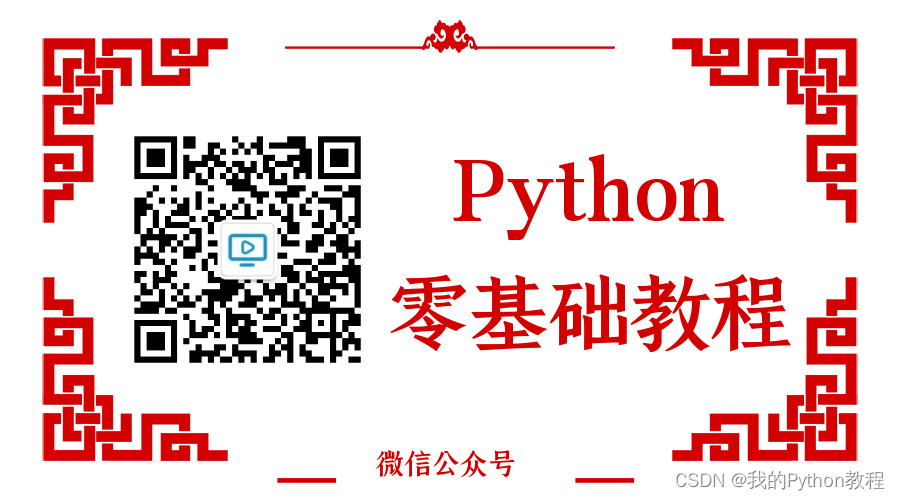
Tkinter教程21:Listbox列表框+OptionMenu选项菜单+Combobox下拉列表框控件的使用+绑定事件
------------★Tkinter系列教程★------------ Tkinter教程21:Listbox列表框OptionMenu选项菜单Combobox下拉列表框控件的使用绑定事件 Tkinter教程20:treeview树视图组件,表格数据的插入与表头排序 Python教程57:tkinter中如何…...

Django中的SQL注入攻击防御策略
Django中的SQL注入攻击防御策略 SQL注入是一种常见的网络安全威胁,可以导致数据库被非法访问和数据泄露。本文将介绍在Django框架中防止SQL注入攻击的关键方法,包括使用参数化查询、使用ORM、进行输入验证和使用安全的编码实践。 SQL注入是一种利用应用程…...
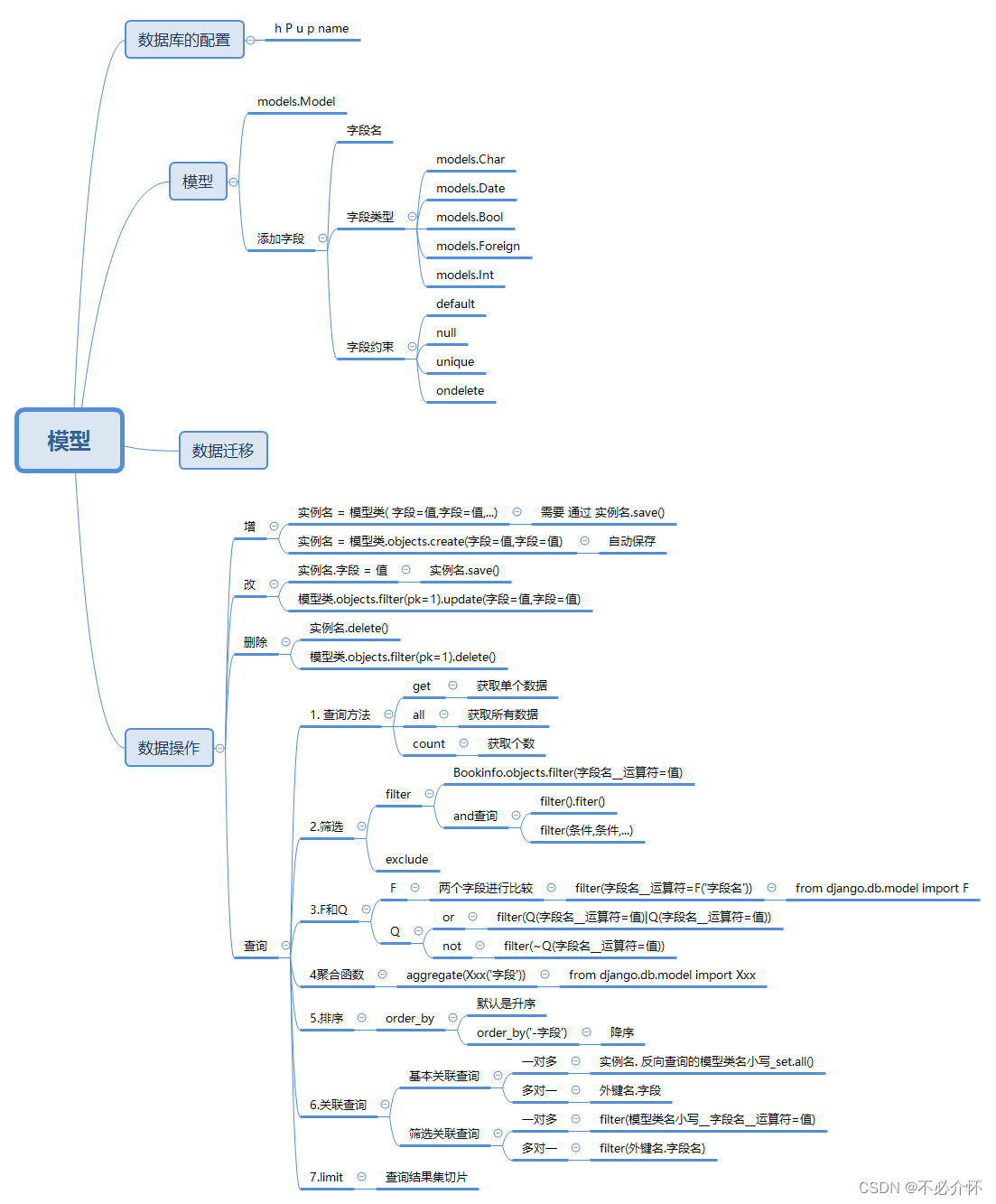
ORM模型类
模型 创建两个表 创建模型类 from django.db import models# Create your models here. class BookInfo(models.Model):name models.CharField(max_length10, uniqueTrue) # 书名pub_date models.DateField(nullTrue) # 发布时间read_count models.IntegerField(default…...
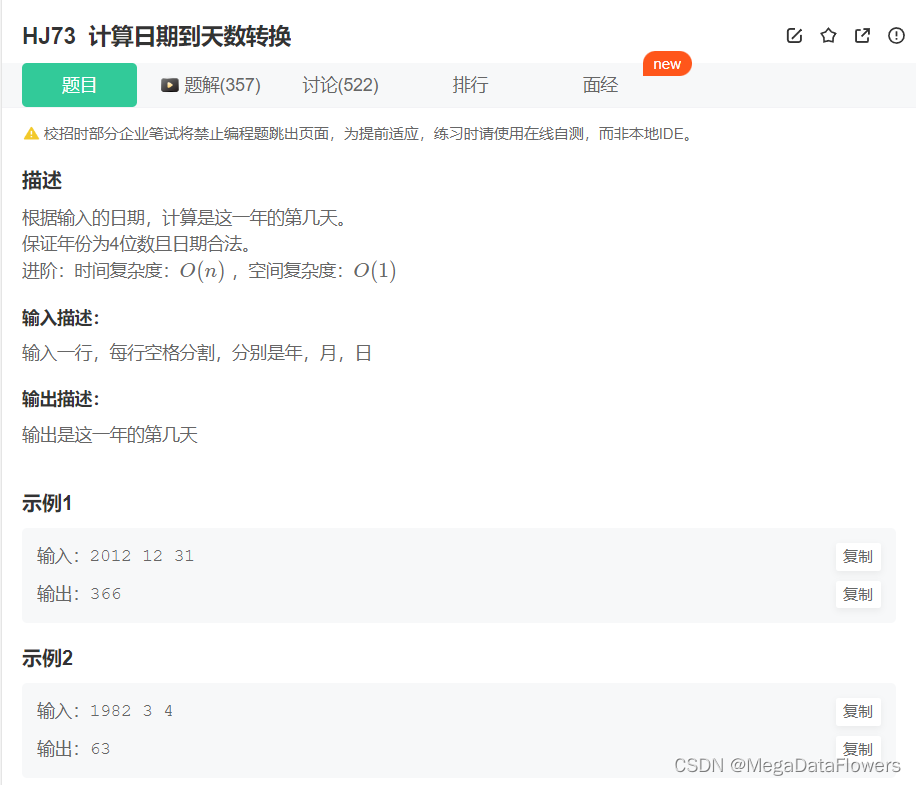
Java强训day14(选择题编程题)
选择题 编程题 题目1 import java.util.Scanner;public class Main {public static void main(String[] args) {//读入年月日(字符串形式读入)Scanner sc new Scanner(System.in);String s sc.nextLine();String[] ss s.split(" ");i…...
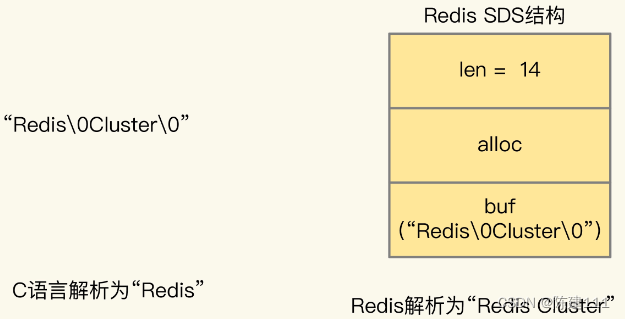
Redis核心技术与实战【学习笔记】 - 31.番外篇:Redis客户端如何与服务器端交换命令和数据
简述 Redis 使用 RESP 协议(Redis Serialzation Protocol)协议定义了客户端和服务器端交互的命令、数据的编码格式。在 Redis 2.0 版本中,RESP 协议正式称为客户端和服务器端的标准通信协议。从 Redis 2.0 到 Redis 5.0 ,RESP 协…...
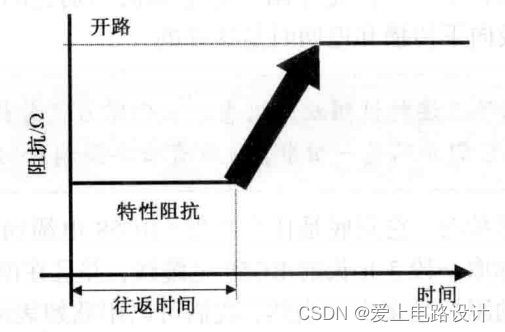
电缆线的阻抗50Ω,真正含义是什么?
当我们提到电缆线的阻抗时,它到底是什么意思?RG58电缆通常指的是50Ω的电缆线。它的真正含义是什么?假如取一段3英尺(0.9144米)长的RG58电缆线,并且在前端测量信号路径与返回路径之间的阻抗。那么测得的阻抗是多少?当然…...

校园团餐SAAS系统源码
## 项目介绍 校园团餐SAAS系统,是全新推出的一款轻量级、高性能、前后端分离的团餐系统,支持微信小程序 。 技术特点 > * 前后端完全分离 (互不依赖 开发效率高) > * 采用PHP8 (强类型严格模式) > * ThinkPHP8.0(轻量级PHP开发框…...

图数据库neo4j入门
neo4j 一、安装二、简单操作<一>、创建<二>、查询<三>、关系<四>、修改<五>、删除 三、常见报错<一>、默认的数据库密码是neo4j,打开浏览器http://localhost:7474登录不上,报错: Neo.ClientError.Security.Unauthorized: The client is un…...
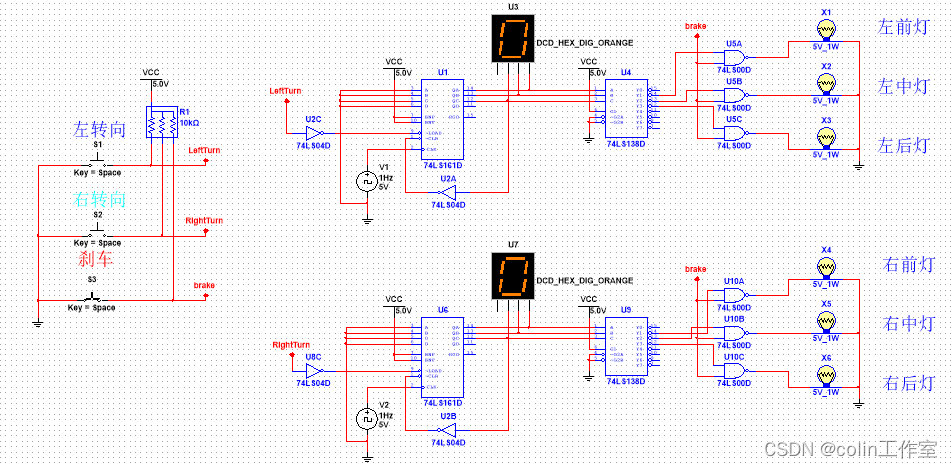
Multisim14.0仿真(五十五)汽车转向灯设计
一、功能描述: 左转向:左侧指示灯循环依次闪亮; 右转向:右侧指示灯循环依次闪亮; 刹车: 所有灯常亮; 正常: 所有灯熄灭。 二、主要芯片: 74LS161D 74LS04D 74…...

2402C++,C++的反向代理
原文 cinatra支持反向代理很简单,5行代码就可以了.先看一个简单的示例: #include "cinatra/coro_http_reverse_proxy.hpp" using namespace cinatra; int main() {reverse_proxy proxy_rr(10, 8091);proxy_rr.add_dest_host("127.0.0.1:9001");proxy_rr.a…...

[职场] 服务行业个人简历 #笔记#笔记
服务行业个人简历 服务员个人简历范文1 姓名: XXX国籍:中国 目前所在地:天河区民族:汉族 户口所在地:阳江身材: 160cm43kg 婚姻状况:未婚年龄: 21岁 培训认证:诚信徽章: 求职意向及工作经历 人才类型:普通求职 应聘职位: 工作年限:职称:初级 求职类型:全职可到职日期:随时 月薪…...

代码随想录算法训练营|day30
第七章 回溯算法 332.重新安排行程51.N皇后37.解数独代码随想录文章详解 332.重新安排行程 (1)参考 创建map存储src,[]dest映射关系,并对[]dest排序 每次取map中第一个dest访问,将其作为新的src,每访问一条src->destÿ…...
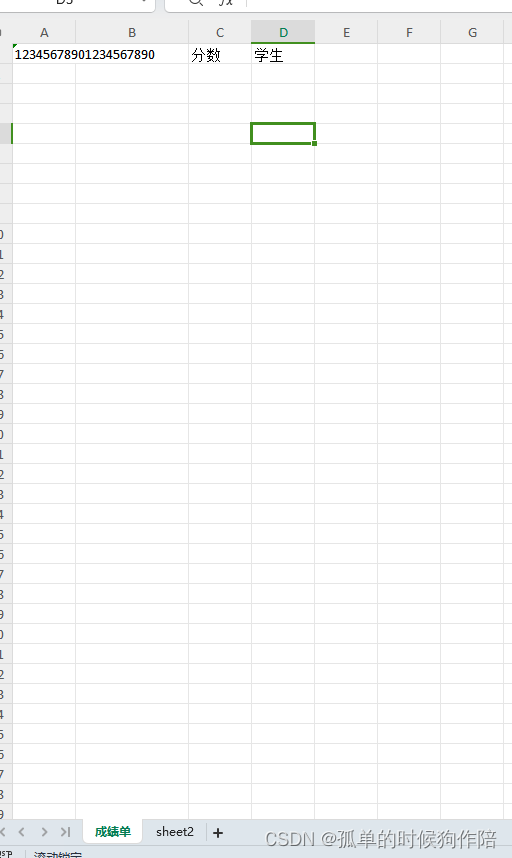
PHPExcel导出excel
PHPExcel下载地址 https://gitee.com/mirrors/phpexcelhttps://github.com/PHPOffice/PHPExcel 下载后目录结构 需要的文件如下图所示 将上面的PHPExcel文件夹和PHPExcel.php复制到你需要的地方 这是一个简单的示例代码 <?php$dir dirname(__FILE__); //require_once …...

ubuntu系统下c++ cmakelist vscode debug(带传参的debug)的详细示例
c和cmake的debug,网上很多都需要配置launch.json,cpp.json啥的,记不住也太复杂了,我这里使用cmake插件带有的设置,各位可以看一看啊✌(不知不觉,竟然了解了vscode中配置文件的生效逻辑🤣) 克隆…...

聊聊JIT优化技术
🎬作者简介:大家好,我是小徐🥇☁️博客首页:CSDN主页小徐的博客🌄每日一句:好学而不勤非真好学者 📜 欢迎大家关注! ❤️ 我们知道,想要把高级语言转变成计算…...
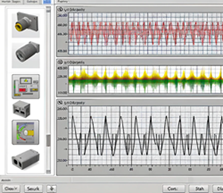
LabVIEW动平衡测试与振动分析系统
LabVIEW动平衡测试与振动分析系统 介绍了利用LabVIEW软件和虚拟仪器技术开发一个动平衡测试与振动分析系统。该系统旨在提高旋转机械设备的测试精度和可靠性,通过精确测量和分析设备的振动数据,以识别和校正不平衡问题,从而保证机械设备的高…...

《低功耗方法学》翻译——附录B:UPF命令语法
附录B:UPF命令语法 本章介绍了文本中引用的所选UPF命令的语法。 节选自“统一电源格式(UPF)标准,1.0版”,经该Accellera许可复制。版权所有:(c)2006-2007。Accellera不声明或代表摘录材料的准确性或内容&…...

Leetcode 3027. Find the Number of Ways to Place People II
Leetcode 3027. Find the Number of Ways to Place People II 1. 解题思路2. 代码实现 题目链接:3027. Find the Number of Ways to Place People II 1. 解题思路 这一题的话我也没想到啥特别好的思路,采用的纯粹是遍历剪枝的思路。 遍历的话好理解&…...
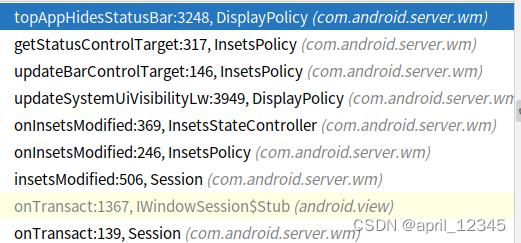
android inset 管理
目录 简介 Insets管理架构 Insets相关类图 app侧的类 WMS侧的类 inset show的流程 接口 流程 WMS侧确定InsetsSourceControl的流程 两个问题 窗口显示时不改变现有的inset状态 全屏窗口上的dialog 不显示statusbar问题 View 和 DecorView 设置insets信息 输入法显…...

Chapter03-Authentication vulnerabilities
文章目录 1. 身份验证简介1.1 What is authentication1.2 difference between authentication and authorization1.3 身份验证机制失效的原因1.4 身份验证机制失效的影响 2. 基于登录功能的漏洞2.1 密码爆破2.2 用户名枚举2.3 有缺陷的暴力破解防护2.3.1 如果用户登录尝试失败次…...

Ubuntu系统下交叉编译openssl
一、参考资料 OpenSSL&&libcurl库的交叉编译 - hesetone - 博客园 二、准备工作 1. 编译环境 宿主机:Ubuntu 20.04.6 LTSHost:ARM32位交叉编译器:arm-linux-gnueabihf-gcc-11.1.0 2. 设置交叉编译工具链 在交叉编译之前&#x…...

QMC5883L的驱动
简介 本篇文章的代码已经上传到了github上面,开源代码 作为一个电子罗盘模块,我们可以通过I2C从中获取偏航角yaw,相对于六轴陀螺仪的yaw,qmc5883l几乎不会零飘并且成本较低。 参考资料 QMC5883L磁场传感器驱动 QMC5883L磁力计…...
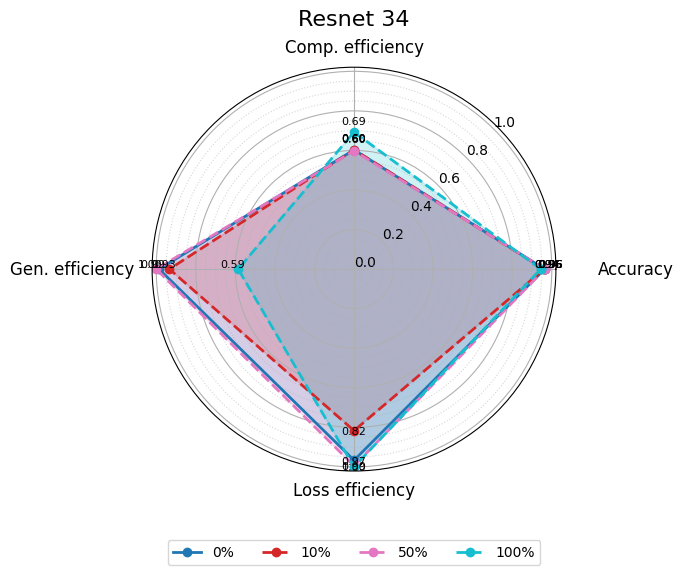
使用分级同态加密防御梯度泄漏
抽象 联邦学习 (FL) 支持跨分布式客户端进行协作模型训练,而无需共享原始数据,这使其成为在互联和自动驾驶汽车 (CAV) 等领域保护隐私的机器学习的一种很有前途的方法。然而,最近的研究表明&…...

系统设计 --- MongoDB亿级数据查询优化策略
系统设计 --- MongoDB亿级数据查询分表策略 背景Solution --- 分表 背景 使用audit log实现Audi Trail功能 Audit Trail范围: 六个月数据量: 每秒5-7条audi log,共计7千万 – 1亿条数据需要实现全文检索按照时间倒序因为license问题,不能使用ELK只能使用…...
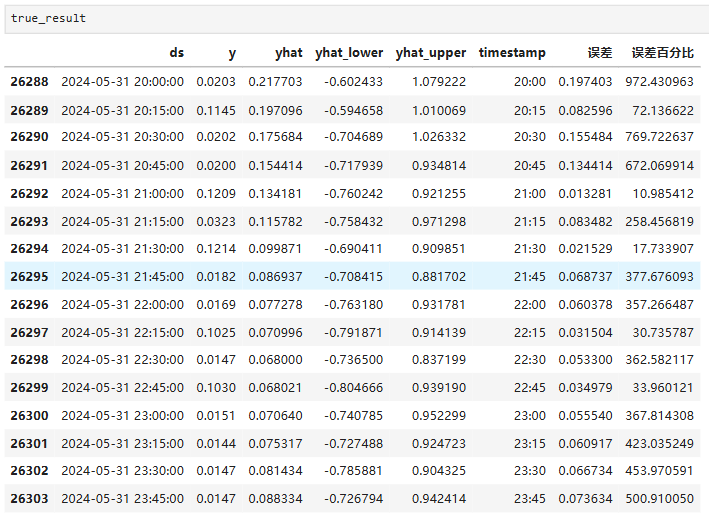
Python实现prophet 理论及参数优化
文章目录 Prophet理论及模型参数介绍Python代码完整实现prophet 添加外部数据进行模型优化 之前初步学习prophet的时候,写过一篇简单实现,后期随着对该模型的深入研究,本次记录涉及到prophet 的公式以及参数调优,从公式可以更直观…...
)
postgresql|数据库|只读用户的创建和删除(备忘)
CREATE USER read_only WITH PASSWORD 密码 -- 连接到xxx数据库 \c xxx -- 授予对xxx数据库的只读权限 GRANT CONNECT ON DATABASE xxx TO read_only; GRANT USAGE ON SCHEMA public TO read_only; GRANT SELECT ON ALL TABLES IN SCHEMA public TO read_only; GRANT EXECUTE O…...
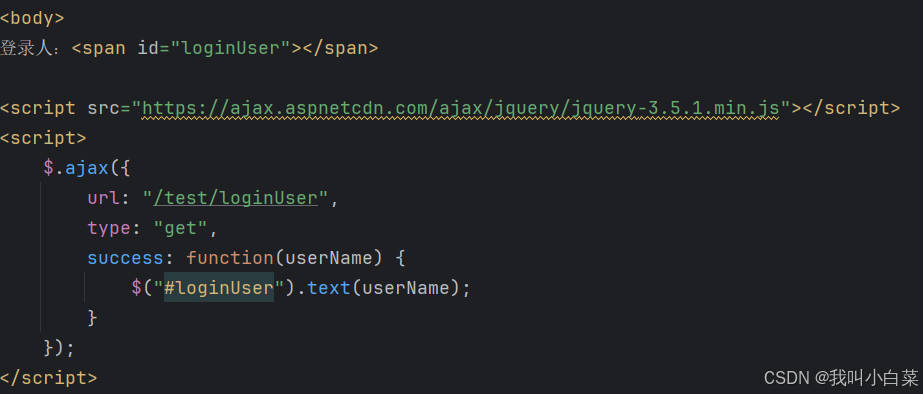
【Java_EE】Spring MVC
目录 Spring Web MVC 编辑注解 RestController RequestMapping RequestParam RequestParam RequestBody PathVariable RequestPart 参数传递 注意事项 编辑参数重命名 RequestParam 编辑编辑传递集合 RequestParam 传递JSON数据 编辑RequestBody …...

蓝桥杯3498 01串的熵
问题描述 对于一个长度为 23333333的 01 串, 如果其信息熵为 11625907.5798, 且 0 出现次数比 1 少, 那么这个 01 串中 0 出现了多少次? #include<iostream> #include<cmath> using namespace std;int n 23333333;int main() {//枚举 0 出现的次数//因…...
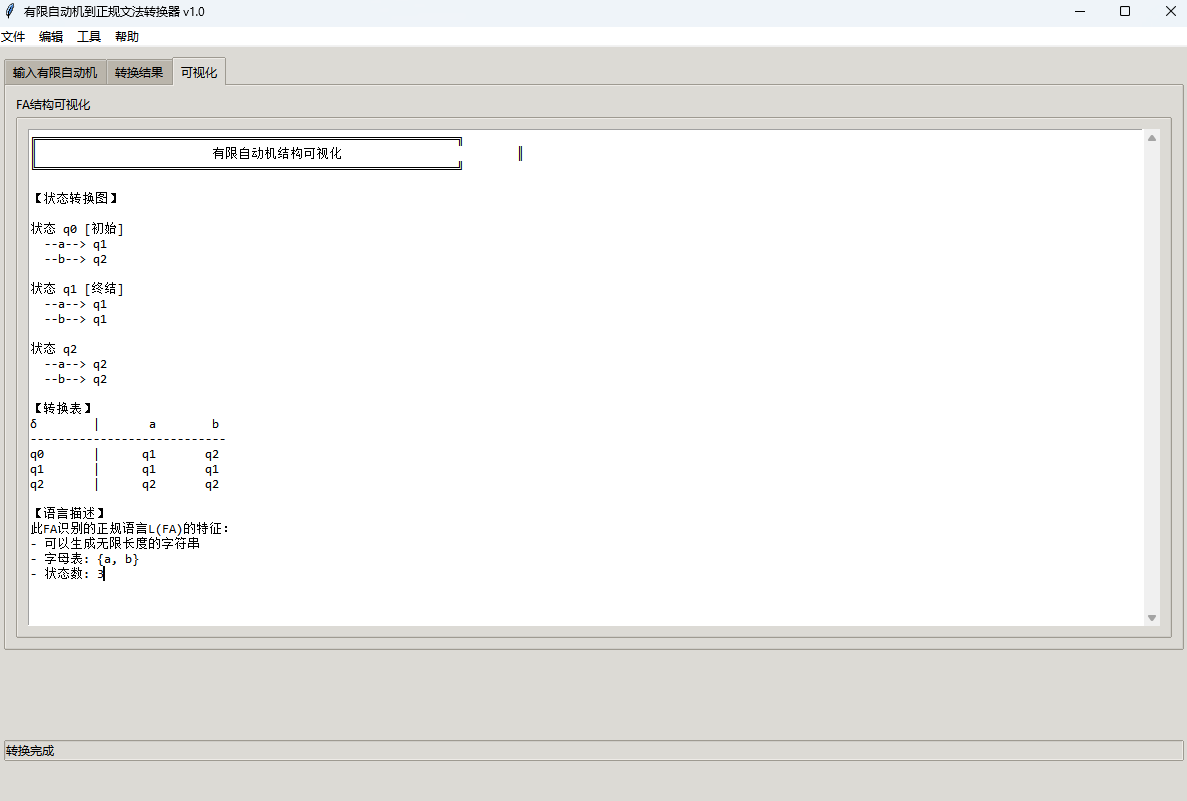
有限自动机到正规文法转换器v1.0
1 项目简介 这是一个功能强大的有限自动机(Finite Automaton, FA)到正规文法(Regular Grammar)转换器,它配备了一个直观且完整的图形用户界面,使用户能够轻松地进行操作和观察。该程序基于编译原理中的经典…...
